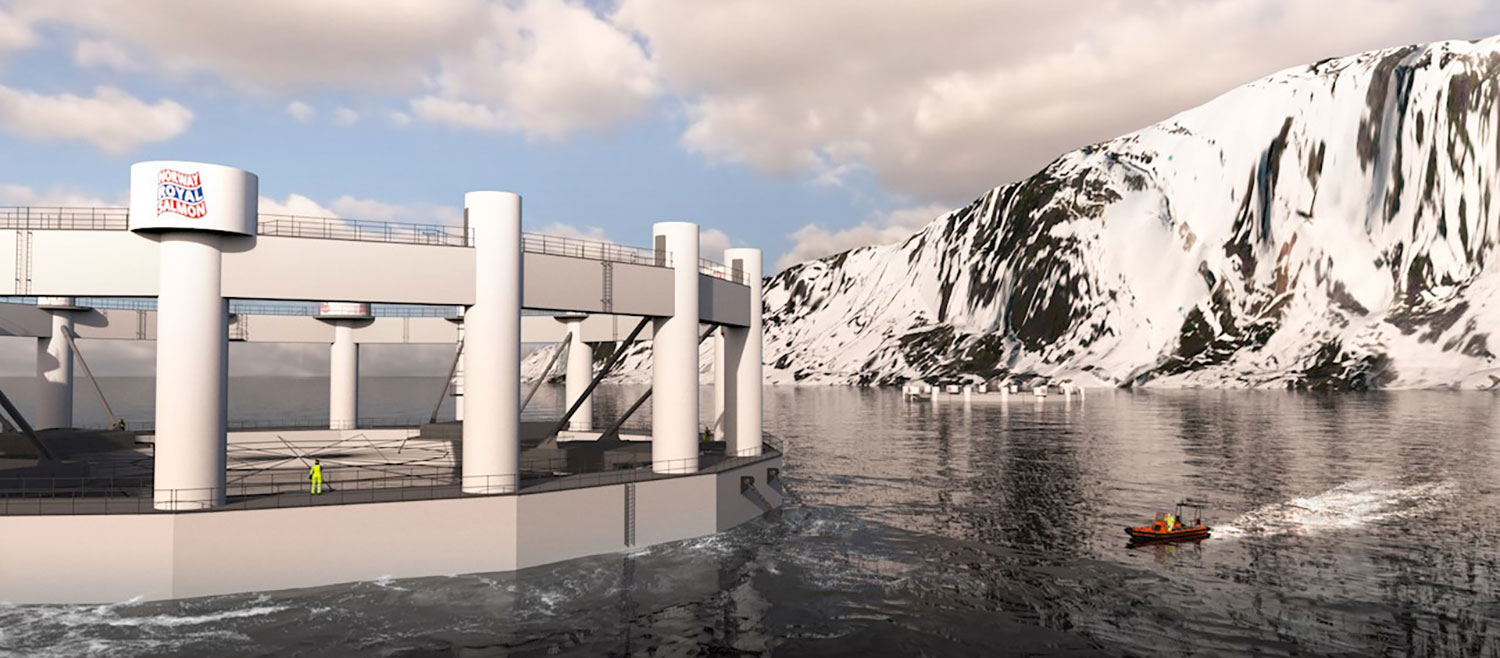
ABB has been awarded an aquaculture project to power an sensor-laden arctic offshore farming facility in association with Norway Royal Salmon (NRS), where up to 5990 tons of salmon will be farmed. Image courtesy of ABB.
ABB Systems to Power Arctic Offshore Farming’s new Salmon Farming Concept with Remote-Controlled Submersible Fish Pens
The system also collects environmental data including as meteorological conditions, ocean currents, oxygen level, sea temperature and pH at different depths.
Latest in Internet of Things IoT
Internet of Things IoT Resources


Latest News
May 20, 2019
Arctic Offshore Farming is developing a new concept for salmon farming using remote-controlled and submersible fish pens based on offshore technology. ABB will have system responsibility for electrical, automation, instrumentation and telecom solutions.
Arctic Offshore Farming is a Norway Royal Salmon (NRS) project. NRS has received development permits that allow the company a total of up to 5,990 tons of salmon at the fish farm location.
Design for Harsh Environment
The offshore farm consists of two large fish cages that are placed in the Norwegian Sea outside Troms, in an area where weather and wave conditions are far more demanding than inside the fjords, where traditional farms are located.
Placing the farm offshore reduces its environmental footprint, while providing an opportunity to study if this can provide a healthier environment for the fish. But the harsh climate also means stricter safety requirements are required. ABB will be responsible for designing the monitoring and control systems that will make it possible to operate the plant safely. This means, among other things, that there are back-up solutions, or redundancy, in critical systems such as energy supply and communication.
The solution is a part of ABB Ability, the company’s unified, cross-industry digital offering—extending from device to edge to cloud—with devices, systems, solutions, services.
High Demands for Stability
Pontoons over and under the fish pens will keep them in place in two different positions. In the service position, the facility is lifted to allow access to the equipment. In the normal operating position, the roof of the cages will lie 10 meters below the sea surface.
In ballasting and de-ballasting (raising and lowering), the fish pens will be partially submerged.
Among the most critical systems are the pontoon ballast water systems, designed to ensure that the pens are stable. ABB will deliver the control system with sensors, monitoring, automation and interfaces for the remote control of the pumps. The harsh climate in the Norwegian Sea presents challenges with fouling and icing, which will cause time-varying weight changes challenging the constructions ballast system supplied by ABB.
Extensive Data Collection
The system also collects environmental data including meteorological conditions, ocean currents, oxygen level and sea temperature. It also monitors the pH at different depths and the amount of biomass in the cages, among others data points.
“One purpose of awarding a development license is to find solutions to some of the challenges the industry has today so that it can continue to grow in a sustainable way. The pens will be unmanned and operate in submerged operation. The fish pens are remotely controlled from a feed barge that lies about 400 meters from the pens. Technically, the fish farm can just as easily be managed from a control room on land,” says Lars Wasa Andersen, sales specialist (aquaculture) at ABB.
ABB is working to be the most valuable partner within electrical, instrument, automation and telecom systems for aquaculture customers to help improve efficiency, environmental impact and productivity across the value chain, including enabling new solutions for fish farming offshore and onshore. Fish welfare, traceability and food safety are key focus areas of ABB’s support.
The entire solution is scheduled to be in place by the end of the third quarter of 2020.
Sources: Press materials received from the company and additional information gleaned from the company’s website.
Subscribe to our FREE magazine, FREE email newsletters or both!
Latest News
About the Author
DE’s editors contribute news and new product announcements to Digital Engineering.
Press releases may be sent to them via [email protected].




